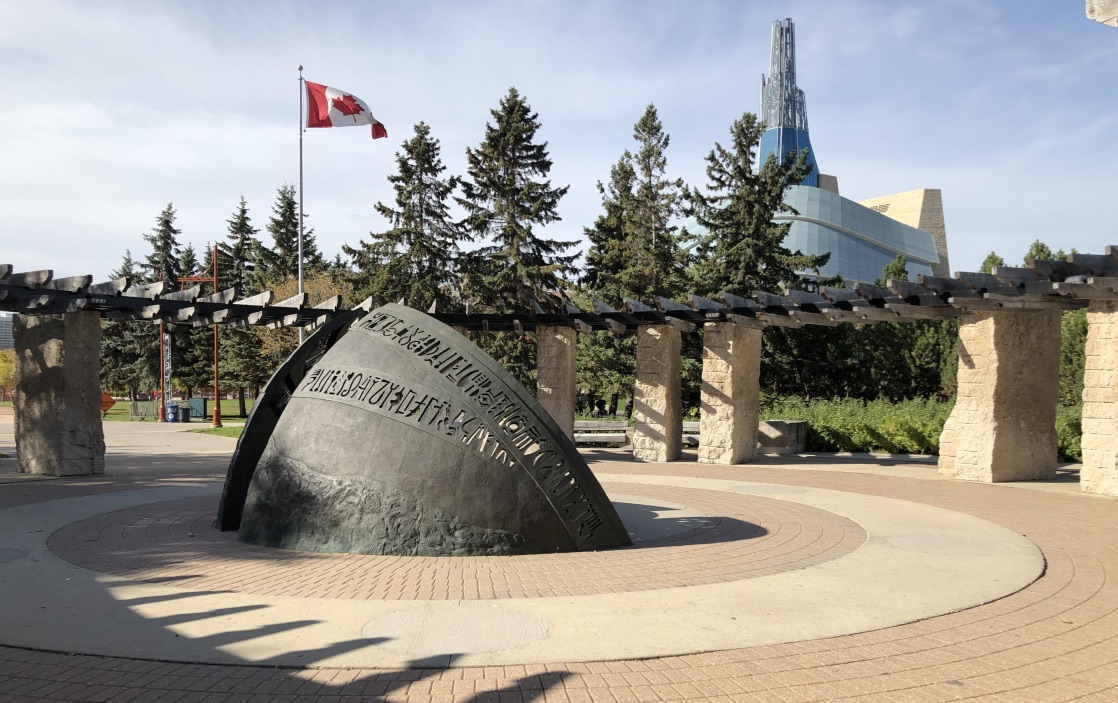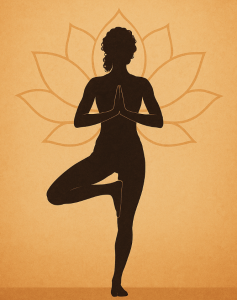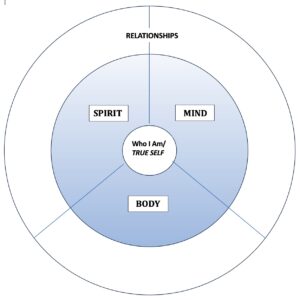Media error: Format(s) not supported or source(s) not found
Download File: https://righttojoy.com/wp-content/uploads/2019/10/IMG_1617.m4v?_=1The Meeting Place
This park commemorates the dynamic spirit of human interaction that began over 6000 years ago here at the junction of the Red and Assiniboine Rivers. It is dedicated to all those who came to the Forks and shared their vision for a better future. Their hopes and dreams became the Canadian West.
If disrespect was the primary agenda of the October 7th Canadian leadership debate, then disappointment was the prevailing aftermath expressed by undecided voters, political pundits and desperately-clinging-to-party-line voters.
From my perspective, I feel no optimism that any of our political parties or leaders can turn around our broken political system unless they are willing to trash it and begin anew. Here’s a thought! How about trying dialogue instead of debate.
Debating — attempting to win by defacing and/or making wrong the other voices — begets adversaries not collaborators. I do not understand why we persist in thinking that democracy requires debate. When are we going to accept that relying on debate rather than dialogue — respectfully listening to all opinions without denying them — limits our potential and keeps us stuck in childish behaviour? Didn’t Trudeau, et al. learn at their parental supper tables or in their public-school classrooms that “talking over each other” is rude and unacceptable?! IYHO, who among those leaders demonstrated human dignity and integrity? Doesn’t it make sense to vote for those values? And, isn’t that what this “peace” nation wants to uphold?
Even in the shadow of a debate more resembling a dark cloud, I am always amazed at the universe’s ability to offer me a silver lining. And here it is. I am in the final days of publishing a book co-authored by six peers — Designing for Deep Collaboration: New Building Blocks for an Integrated Platform. This seven-year collaboration brought together Canadian and American consulting social scientists. The deep collaboration required to produce the book is a culmination of action-research covering several decades as well as a vision of emerging potential yet to be fully realized.
Of course, in a global society where “faster is seemingly better”, eyebrows raise when they hear that it took seven years to deliberate, write and produce the shared result. Even though instant gratification may be the operational mode for many, in our heart-of-hearts, we all know the slow-but-sure tortoise was the true winner.
Deep systemic change requires
deep collaboration.
Superficial debate will not move us to the significant shifts in personal and political behaviours necessary to collectively save ourselves and our planet.
Rather than summarize the book here, I thought it appropriate to leave you with an excerpt so you can decide its relevance in today’s personal and political environments.
When discussing governance we distinguish representational democracy from direct participative democracy.
Representational democracy (one person, one vote) is intrinsically not representative, not acting for the whole, not responsive to the whole and is psychologically distancing (them vs. us). It minimizes participation, generates apathy, elitism and corruption. It creates professional career politicians.
Participative democracy leads to a duty for every citizen to serve as a politician at some point and is therefore participative by definition. Consequently, there is no room for political parties or career politicians, no point in lobbying and no gain in corruption. Politicians come from the community selected by lot (just as with a jury) and return to the community after serving. Participative democracy is, therefore, representative of the whole and can act as a group in the interests of the whole community. A similar system can be applied to corporate governance or national governance.
We believe the model of a single leader [or reigning city-state, or imperial regime] is an artefact of organizations built over the last five or six centuries. For a higher order of success to come to fruition, we need deeper collaboration within different leadership where everyone leads and everyone designs. This leadership horizon for navigating in a complex world necessitates
– flexibility of thought,
– awareness of self and others,
– willingness to act and take accountability for those actions, and
– a belief that what we need is available somewhere and known by someone.
When everyone leads – everyone designs, we shift into hyperdrive en route to a universe of performance and prosperity. Leadership, as we have known it, shifts from an archetype of chosen characteristics into a design element for deep collaboration. The vignette below nicely illustrates how we can co-design and co-lead in a world experiencing and expecting revolutionary change.
Hi, my name is Joe, and I work for the Canada Revenue Agency’s customer service team. (The Canada Revenue Agency is responsible for collecting income tax, much like the IRS in the USA or the Inland Revenue Service in the UK).
Yesterday, one of our customers phoned complaining she was on our phone system for 30 minutes trying to get a question answered relating to her income tax return. What with the 7-category menus every time she was transferred (four times) and the final 15-minute hold once she finally arrived at her destination, when an actual person spoke to her, she was irritable and offended. Not the best way to start a conversation.
Here are the steps my team took to change our customer’s experience . . .
First of all, we recognized our work process and structure was extremely fragmented. Our associates did not have a full understanding of critical elements of the tax code and the areas that generated the majority of questions from customers. Consequently, we restructured ourselves into cross-functional teams with broad tax code knowledge and experience. We instituted a series of education and mentoring programs for associates to broaden their knowledge from their narrow comfort level. The intent was to provide “one-touch” service where customers could get their questions answered and issues resolved with the first person they contacted.
This also required a culture shift in decision-making. Decision-making rights were shifted to give associates “best judgment” authority to resolve issues immediately. “Assume good intent” became a mantra that gave associates broad decision-making responsibilities. Peer coaching, mentoring and information-sharing forums were established to ensure consistent handling of similar issues, and further develop the capability of associates. As a result, associates developed a higher level of confidence enabling them to more quickly and effectively answer customers’ questions.
Trust-building, shared leadership and global responsibility are some of the social drivers leading the charge for radical change. In attempts to realize these major shifts in our communities and workplaces, we witness the redesign of organizations [and nations] from leader-led to leader-full (everyone leads – everyone designs). Almost daily, we read about yet another organization ridding itself of bottlenecked decision protocols in order to tap into all employees’ capabilities for faster, more informed decisions and innovations.
The truth is that each person is a unique miracle, a combination of millennia of heredity and environment that could never have happened before in exactly the same way, and could never happen again in exactly the same way. Yet, at the same time, we share everything as human beings. We can both find our unique voice and realize that as human beings, we are linked, not ranked. Gloria Steinem (Lands’ End, Spring 2016)
In summary, where everyone leads-everyone designs, the intention is to optimize those forces channelling actions from the systems, processes and people. This foundational value energizes and directs human creativity, connectivity and contribution and is, thus, at the essence of anything we design or build. Once we see any system as a much larger whole adjacent to many other much larger wholes (ONEs or organizations, networks and ecosystems), it is nearly impossible to find balance within and between those systems without this deep collaboration. A sense of belonging, including autonomous and responsible participation, emerges as environmental consequences of deep collaboration.
For building whole ONE enterprises, we seek to optimize the triple bottom line of people, prosperity, and planet. Wholeness encompasses the relationships and interdependencies among the three levels of organization we encounter: individuals and their stakeholders, organizations and their stakeholders, and the ecosystem along with its stakeholders. The degree to which all stakeholders’ intentions are aligned determines system integrity. Authenticity and integrity of actions at each level are required to experience wholeness. Deceit erodes awareness, understanding and trust. Hence the importance of agreeing upon a mutually beneficial purpose and set of values from which to operate. J. Norton, H. Maupin, D. Austrom, D. De Guerre, C. McGee, C. Ordowich
Every day, life presents us with many choices. Without a deep understanding of why we behave the way we do, the choices we make remain unconscious. Raising our consciousness means choosing with discernment that which most feeds our soul.
Deep collaboration occurs at all layers of our being; first — intra-personally. Once that inner integration occurs, we have the capacity to connect within community — inter-personally. Finally, our strengthened intuitive capacity connects us to the eternal spirit that animates all of life — extra-personally. As a result of this wholeness or oneness, our creative spirit emerges, blends with all that is and thus, expands.
We are participating in a global shift of consciousness, which when it reaches its “tipping point” will transform our neanderthal definition of democracy, power and community. Increasingly, humanity is confronted with complex social conditions (i.e., climate change, global mobility) that require and even impose greater connection. To successfully navigate these new challenges and complexities, it necessitates diving deeper into our intuitive intelligence as well as working closely with others’ and the planet’s intelligence.
Isolation and loneliness are not authentic ways of living in the world; nor are they healthy. Paradoxically, they are also on the rise. On one hand, we have complexity and technology pressing us together. And, on the other hand, we have mental illness (social withdrawal, depression, anxiety, nationalism) pulling us apart.
Seems to me like a good time to take a stand. Do you want caterwauling or collaborating? Place your vote carefully.





